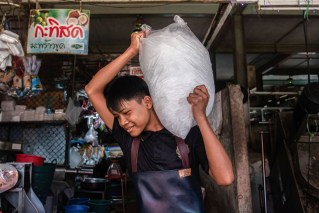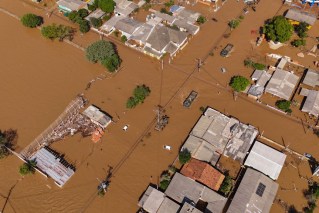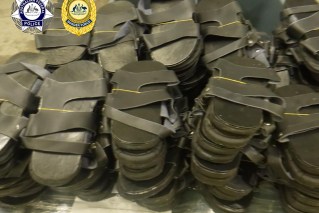Australians should ‘brace themselves’ for coming bushfire season

This year’s fire season will come after three years of wet weather, changing climate patterns and inaction on carbon emissions have created the perfect conditions for disaster.
Greg Mullins AO AFM, a life-long firefighter and founding member of Emergency Leaders for Climate Action, said Australians should “brace themselves” for the possibility of a serious fire season.
“I very much doubt it will be anything like Black Summer because that [was] preceded by a couple years of drought,” he said.
“Luckily, we are going into it with a bit of moisture in the ground, but the flip side is that three years of rain has meant prolific growth, very little hazard reduction [or] burning, and a lot of complacency.”
Australia recently experienced three consecutive years of La Nina, a climate pattern in which sea surface temperatures across the Pacific Ocean are lower than normal, resulting in colder and wetter weather.
Mr Mullins said history shows that every time after Australia has had a rare triple La Nina event, there have been high-risk bushfire seasons.
“It’s individuals and agencies who will be doing their preparations. They’ll be trying to do as much hazard reduction as they can. They’ll be looking at community resilience and emergency plans, their emergency warning systems, training up firefighters and other emergency services,” he said.
“But big picture, we’re going to get more serious fire seasons, storm seasons and flood seasons because of the impact of climate change and our government is not doing enough. It’s too slow and its ambitions are too low.”
If an El Nino climate pattern develops with warming sea temperatures in the Pacific Ocean, then Australia can expect lower rainfall and warmer weather over the eastern half of the country.
Zhi-Weng Chua, a senior climatologist at the Bureau of Meteorology, said while the bureau believes an El Nino event will occur, it isn’t guaranteed.
“If it develops, we can probably expect it is more likely for maximum and minimum temperatures to be broken,” Mr Zhi-Weng said.
“If we do get drier conditions as well as warmer-than-average conditions, especially towards summer, that increases fire risk.”
Other climate factors
Although La Nina and El Nino drive climate in Australia, there are other factors influencing bushfire risks.
Mr Zhi-Weng said the Indian Ocean Dipole (IOD), where sea surface temperatures in the western Indian Ocean become alternately warmer and colder, also affects the climate in Australia.
“The models are predicting that a positive IOD is likely this year, increasing the chance of a below-average rainfall for a large part of Australia, which again could contribute to increased fire risk,” he said.
“During the 2019 bushfire season, that was coming off the back of a strong IOD, and El Nino wasn’t declared that year.”
Experts recently raised the alarm about record global sea and air temperatures for the month of June, as parts of the world experienced massive heatwaves.
Mr Mullins said his organisation, Emergency Leaders for Climate Change, believe that the world is getting close to the limits of adaptability to climate change.
“When I was a young firefighter, the hottest day you’d fight a fire in would be about 39 degrees Celsius. During the Black Summer, I fought fires in 49 degrees,” he said.
“The fires are different: They’re hotter, they’re more destructive, they’re bigger and no fire agency in the world can cope with that.”
Fossil fuels drive climate change
The link between burning fossil fuels and climate change has long been established by scientific studies, and emissions are the driving factor in warming temperatures.

The Australia Institute said in 2022-23, the federal government provided $11.1 billion in tax credits and spending to assist the fossil fuel industry. Photo: AAP
Mr Mullins said the disaster relief fund at a federal level is $200 million a year, but the fossil fuel industry is subsidised to the tune of $11.1 billion each year in Australia.
“Canada has stopped it (subsidies). They’ve legislated to stop it and that money can be spent buying homes that are on flood plains, retrofitting homes that are subject to bushfire threat, to reducing hazards and starting to adapt to this new dangerous here and now,” he said.
“It’s irresponsible of the government to keep propping them up, using our money and allowing more and more coal mines and gas to be extracted when we know what it does to us.”








